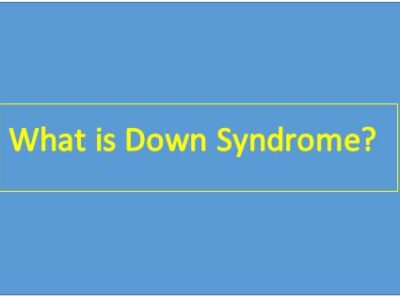October is Down syndrome awareness month so I wanted to share some information that you may already know, and some information that might be new to you.
Down syndrome occurs when an individual has a full or partial extra copy of chromosome 21. The name of the syndrome came in the late nineteenth century because of an English physician, John Langdon Down. He published an accurate description of a person with Down syndrome. It was this scholarly work, published in 1866, that earned Down the recognition as the “father” of the syndrome. Although other people had previously recognized the characteristics of the syndrome, it was Down who described the condition as a distinct and separate entity.
- There are three types of Down syndrome: trisomy 21 (nondisjunction), which accounts for 95% of cases; translocation accounts for about 4%, and mosaicism accounts for about 1%.
- 80% of children with Down syndrome are born to women under 35 years of age (because of the higher number of births), but the incidence of births of children with Down syndrome increases with the age of the mother.
- One in every 700 babies in the United States is born with Down syndrome.
- Although there are common physical characteristics to a person with Down syndrome, like an upward slant to the eyes and a larger gap between the big toe and the other toes (just to name a couple), they really do look more like their family.
- There is an increased risk for certain medical conditions, such as heart defects, childhood leukemia, hearing problems, vision problems, thyroid conditions, and Alzheimer’s disease, and a dual diagnosis of autism is more common than in the typical population.
- People with a diagnosis of Down syndrome are unique individuals just like you and I and should be referred to as a person first and their diagnosis second. Instead of “Down syndrome child,” it should be “a child with Down syndrome.” Also verbiage like “Down’s child” and describing the condition as “Down’s,” as in, “He has Down’s” does not represent the person first.
- They are not always happy. They do have the same feelings and emotions as others.
- People with Down syndrome can go to school, play sports, work jobs, have their own business, live on their own, get married, and have very fulfilling lives.
I hope sharing these few things gave you a little more knowledge and understanding.
To hear more about our journey, check out this interview on TCT “Julie and Friends”:
https://watch.tct.tv/julie-and-friends-1/season:16/videos/julie1139-10-5-21
Thank you for being on this journey with us, shedding a different light on disabilities!
Information above has been shared from the National Down Syndrome Society and the Down Syndrome Resource Foundation websites.
1 Cor 12:22-27
#specialneeds #specialneedsmamas #specialneedskids #inclusion #createdforapurpose #differentnotless

I was surprised to learn so many things in such a short read. I had no idea people with Down syndrome could own their own business or get married. Great article!